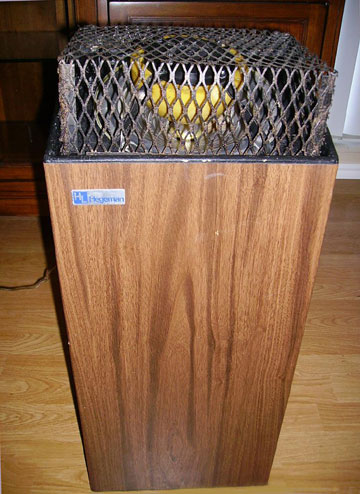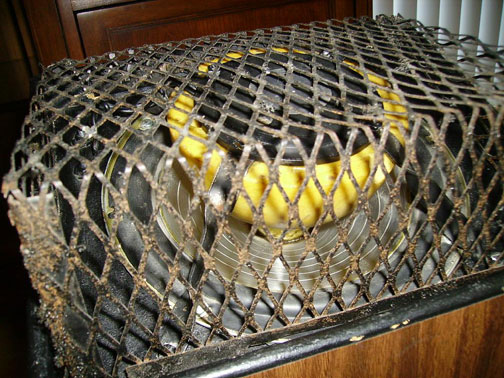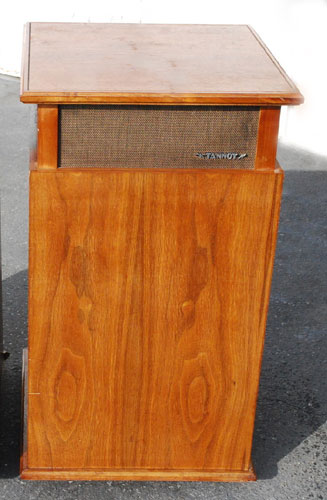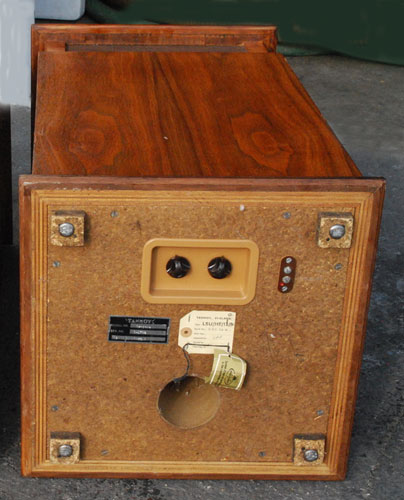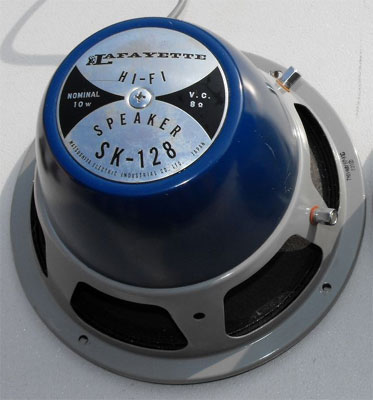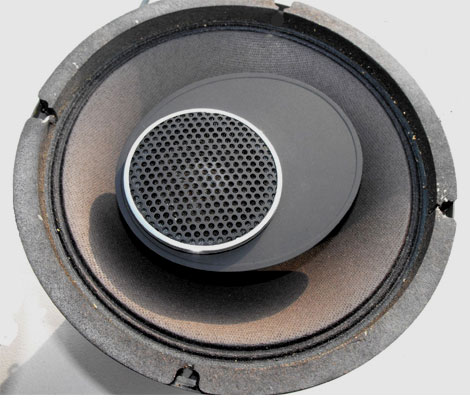Omnidirectional Loudspeakers
By Roger Russell
These pages are
copyrighted.
No portion of this site may be reproduced in whole or in part
without written permission of the author.
What is on these pages
|
|
|
An omnidirectional trash container is not an omnidirectional speaker---but it could be converted!
What is meant by omnidirectional when it comes to sound? An omnidirectional microphone will pick up sound from all directions around it. An omnidirectional speaker radiates sound in all directions. Hegeman(1), Bose (2) and Berlant (3) refer to a ideal sound source as being a point source that behaves like a pulsating sphere. This brings visions of some kind balloon or force field having a surface that expands and contracts modulated by an audio signal. Various systems have been designed over the years to approximate this ideal. Some omni systems have drivers facing straight upwards or at an angle. Others use drivers radiating upwards into a curved or conical reflector. Although claiming to be omnidirectional, none of them are really spherical. I have presented a few examples on this page.
Omni sound is often accomplished with the use of reflectors or diffusers and seems to be a popular method for speakers to distribute sound outdoors. The first hint of what reflected sound could be like to me was in 1959, when working with speakers as a senior engineer at the Sonotone Corporation. By placing a pair of small two-way speakers on the floor, each facing the corner of the listening room and angling them backwards about 45 degrees, a pleasing spacious sound could be heard. It was easy listening without any harshness. This is not by any means a pulsating sphere but it is definitely indirect (reflected) sound.
![]()
Harman Kardon Citation X Loudspeaker
Stereo sound was becoming very popular by 1960 and that was when the Harman Kardon Citation X was introduced at the New York Hi-Fi show. I first met Stewart Hegeman, the designer, when I was at the show. The mids and highs sounded very smooth and reminded me very much of the Brociner Model 4 that I liked so much. The Citations also used a single seven-inch driver made by Lowther in England. The systems sold for $250 each. I was so enthusiastic about the sound with the Lowther drivers that I ended up buying a pair of Citation X systems. A full page ad for the Citation X describes the system. It was published in the December 1960 and March 1961 issues of Audio magazine
Today, the Citation X loudspeaker is relatively unknown and maybe even forgotten by audiophiles who had heard it or heard about it. Hegeman is also relatively unknown concerning his Model 1a omni-directional speaker. He is better remembered for his other designs of tube equipment such as the Citation I preamplifier, Citation II power amplifier and Citation III tuner plus the multiplex adapter, and the Citation IV preamplifier and Citation V power amplifier. A conversation with Hegeman and Norman Eisenberg was published in High Fidelity magazine in February, 1961.
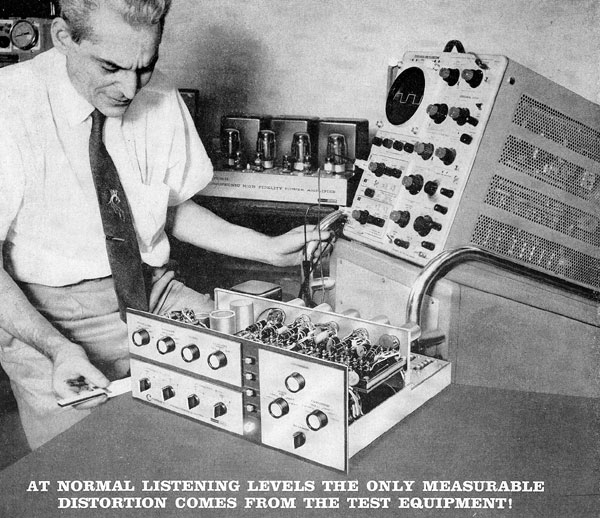
Here is Stewart with the Citation I preamplifier and a Citation II amplifier in the background. This is from ads in the September 1960 and May 1961 issues of Audio Magazine. Note the slide rule in his right hand. What we engineers had to go through back in those days. I assembled a Citation I kit back in 1960 during my stay at the Research and Development Labs at Ft. Monmouth, NJ.

Here is a pair of Citation X that were in storage for many years and are still in excellent condition. They are finished in oiled walnut. Dimensions are 20” wide, 14-3/4” deep and 36-1/2” high. Weight is about 90 lbs. There is plastic grille cloth on three sides and the top.
The Citation X loudspeaker departs further from the Voigt and Brociner model 4 designs. The new principle is aimed more at achieving omnidirectional sound. Although the driver faces upwards, it is not horn loaded in the front like the Lowther TP-1 and it radiates upwards as well as side to side and front.
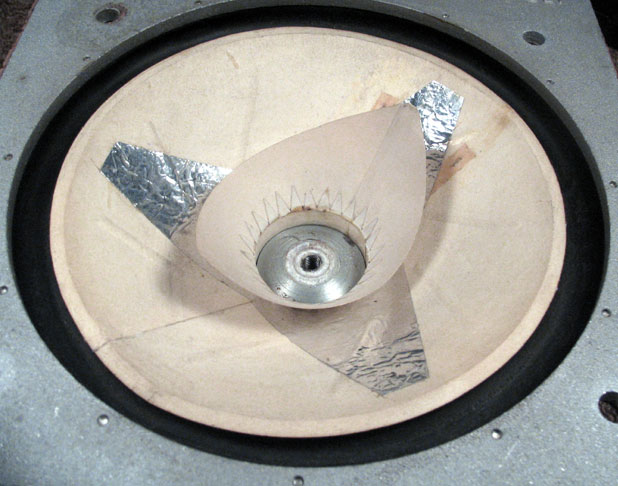
The Citation X CL-1 driver is a modified Lowther PM-6. The square, cast aluminum basket is 8” on a side. The rubber surround has the roll facing inward. The main cone and canoe-shaped whizzer are both made of paper. The effective diameter of the driver is 6-1/2”. Three specially shaped pieces of aluminum foil are glued to the main cone. Stewart told me the aluminum increased the velocity of propagation along the cone. Apparently, it improved the high frequencies. The whizzer is attached directly to the voice coil and covers the range from 2 kHz to 7 kHz. The driver weighs 6.2 pounds.
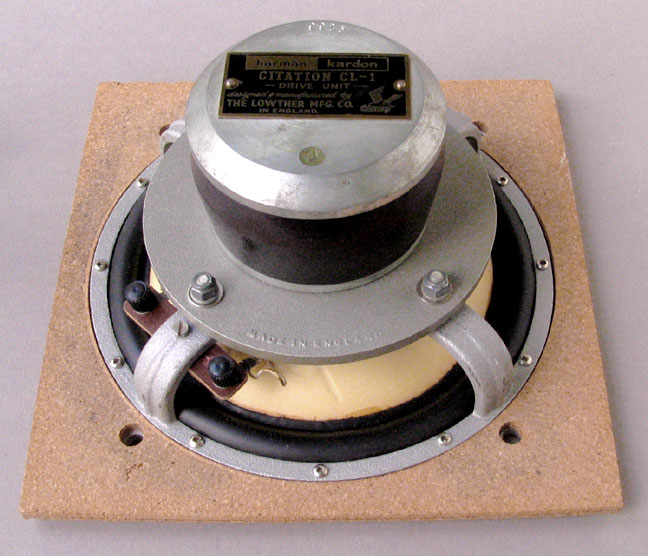
Two black binding post terminals are provided to make connections to the terminal board at the rear of the system. The Lowther driver designs all have very narrow gaps and voice coil centering is super critical. The magnet is made of Ticonal G, which is very strong. The flux density in the gap is very high at 17,500 gauss. Today that translates to 1.75 Tesla. I remember Paul Voigt at the Audio Engineering Society commenting that his 20,000 gauss driver is now reduced to only 2 Tesla.
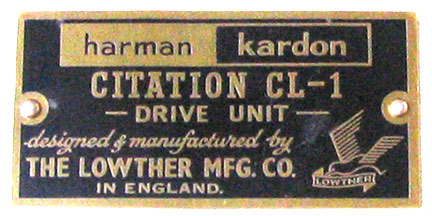
The design of the special CL-1 driver was a joint effort between Donald Chave at Lowther and Stewart Hegeman at Harman-Kardon.
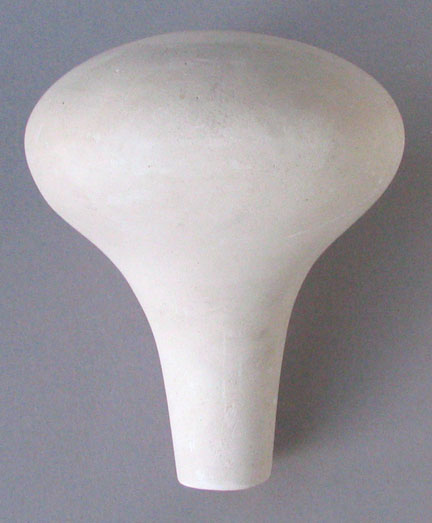
 When mounted in the system, the driver faces upwards
and has a plaster mushroom-shaped stabilizer that places a damping load on the
cone and acts as a diffuser and distributor of the very highs.
When mounted in the system, the driver faces upwards
and has a plaster mushroom-shaped stabilizer that places a damping load on the
cone and acts as a diffuser and distributor of the very highs.
The threaded steel stabilizer rod had to be inserted into the center of the magnetic pole piece. This is a little tricky because the rod is attracted to the strong magnetic gap. It could suddenly grab it and damage the voice coil that is so carefully centered in the gap. A hole in the stabilizer allows it to be inserted into the steel rod above the driver pole piece. A nut can then be screwed on to the top.
The stabilizer is 6-3/8” high and 5-1/4” in
diameter at the widest part. Being made of plaster, it weighs 1.8 pounds. Later
production substituted a lightweight Styrofoam stabilizer but the shape is not
as accurate. A similar interesting shape can be found in Altamonte Springs, FL
along 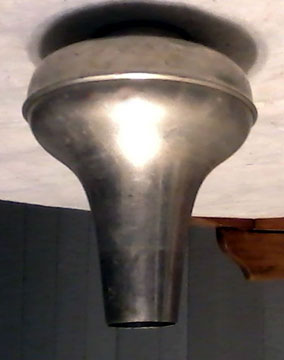 interstate 4.
interstate 4.
Another shape I found that is very similar to the stabilizer is a mute used with a trombone. It is made by Harmon from the E series. It is used to create the wah-wah sounds and fits into the end of the horn. The size is very close to the plaster stabilizer.
Because the magnetic gap is open with the driver facing upwards, there is no protection from dust or other particles to get into the narrow gap. Harman Kardon did offer an inexpensive crinoline dust cover that would fit over the entire driver and stabilizer assembly. It is acoustically transparent but it may not stop fine particles from getting in. On the other hand, it will at least keep roaches out!
The response of the driver directly in front has a rising characteristic and would normally be objectionable However, the combination of the stabilizer shape and rising response provides radiation in the vertical as well as horizontal direction.
The Citations that I bought in 1960 had a beautiful mid-range and highs, but they did not handle any deep bass at higher power. The Lowther drivers soon developed rubbing voice coils. The surrounds and spider centering material had flat closed-pore urethane foam that didn’t keep the voice coil centered very well. The coil gap is extremely small and any slight defect can cause a rubbing voice coil.
I took the drivers down to Harman-Kardon in Plainview, Long Island and Leon Kuby replaced them for me. The new ones came with thin rubber surrounds. This eliminated the rubbing, but they still did not handle any power at low frequencies.
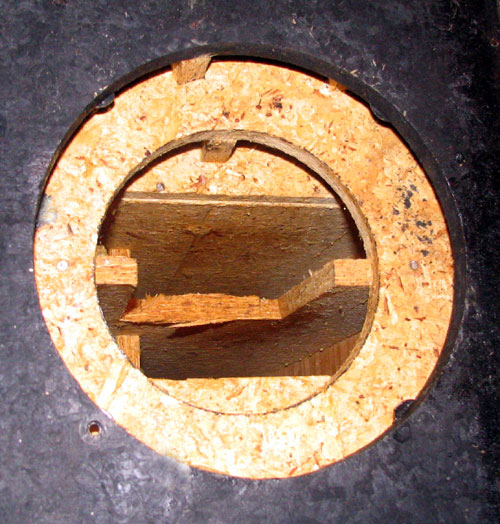
The rear of the driver radiates into a compartment below the black mounting board that is about 1” high and extends to the sides of the system. There are curved internal pieces on two sides.
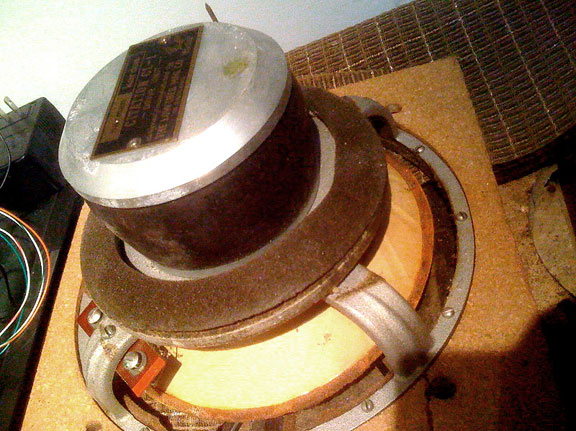
At the same time, the driver is coupled through a porous urethane washer placed between the driver basket and the unpainted circular cutout. Here is an old driver showing the washer that has deteriorated over time as well as the urethane surround used on early drivers.
The path then leads to the folded, dual horn assembly. The lower cutout provides space for the driver magnet. The horn sections are terminated with a narrow slot on each side under the cabinet. The slot at the end of the horn is said to reduce phase shift within the horn. Each path length is claimed to be seven and a half feet. The horn begins to radiate at about 250 Hz and response is a little rough in that area. I had called Stewart about this and he said he had not made measurements on it.

The inside of the grille is well constructed and is open at the back.
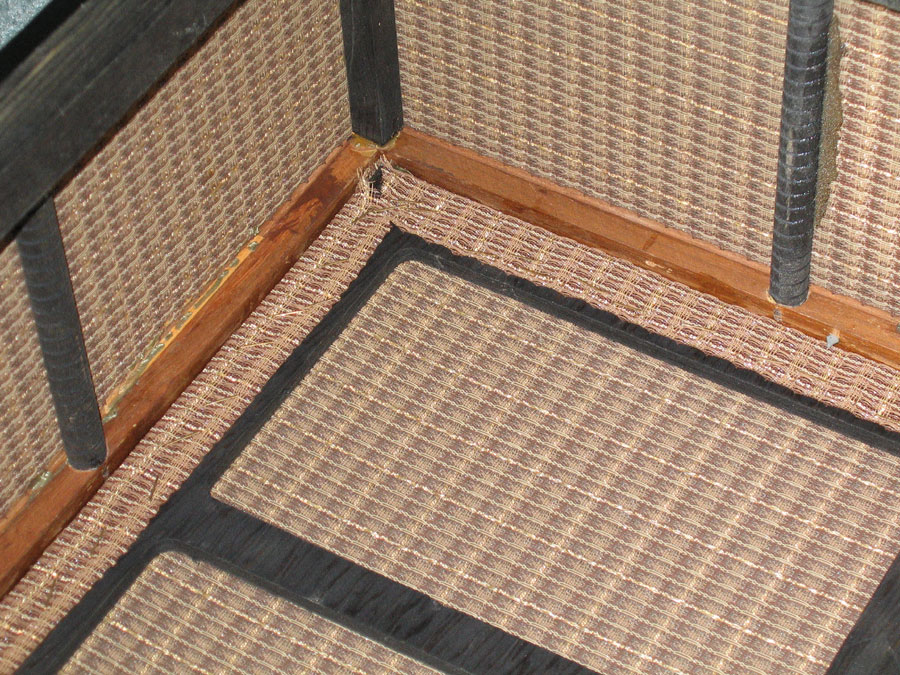
The vertical braces are rounded except for the corners
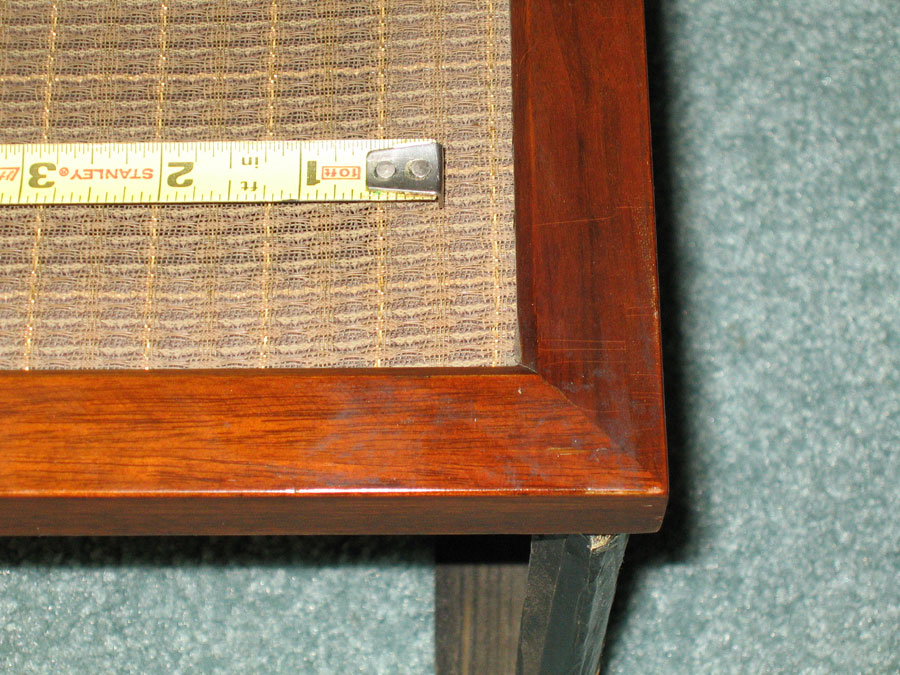
The top part of the grille is finished in walnut.
The grille material has sufficient opening to pass high frequencies without being affected.
The rear square posts have rotated slightly perhaps due to slight shrinkage of the grille material.
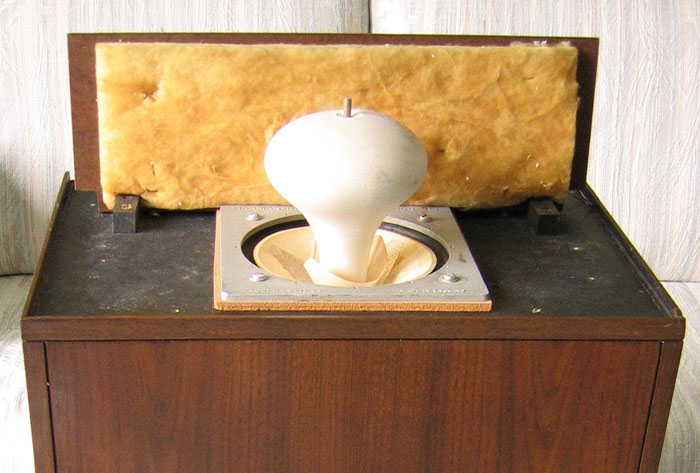
Here is a view with the grille cover removed. As you would expect, a good Omni system will not perform at its best against a wall. This may explain why the Citation has a masonite board behind the driver assembly that is covered with fiberglass to reduce reflections. This may have been a practical consideration and it meant that the system could be placed against a wall and not out in the room or in a corner. Radiation was closer to a quarter of a sphere rather than a hemisphere.
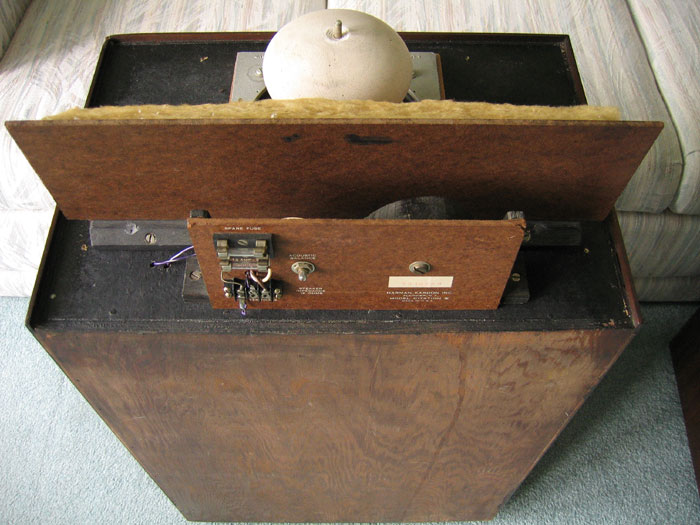
Behind the baffle board is the terminal board.
The terminal board is also made of masonite. It contains a barrier strip for connecting the system to the amplifier. There is also an acoustic balance control to adjust the amount of higher frequencies relative to the low frequencies. The serial number can barely be seen on the white label. The fuse is 1-1/2 amp fast blow and a spare is provided in a second fuse holder. The system impedance is rated at 16 ohms.
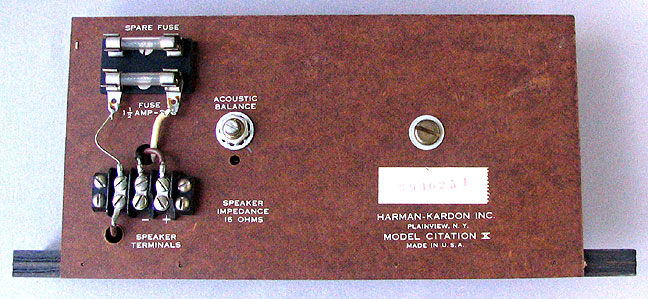

On the other side of the board the acoustic balance control can be seen with a large coil. These two are connected in parallel and they are in series with the driver. The wire wound control can be varied in resistance from zero to 20 ohms. This in turn will vary the mids and highs.
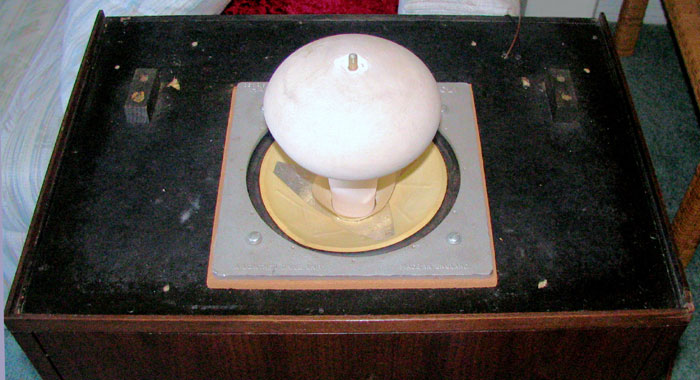
However, by removing the terminal board, back board and fiberglass, the system can be made to radiate into an approximate hemisphere and response is essentially the same for a solid angle of 180 degrees. This is half way towards approaching the so-called ideal pulsating sphere and begins to follow one of the cardinal rules of uniform polar response. However, the system must be placed away from the wall in order to do this.
![]()
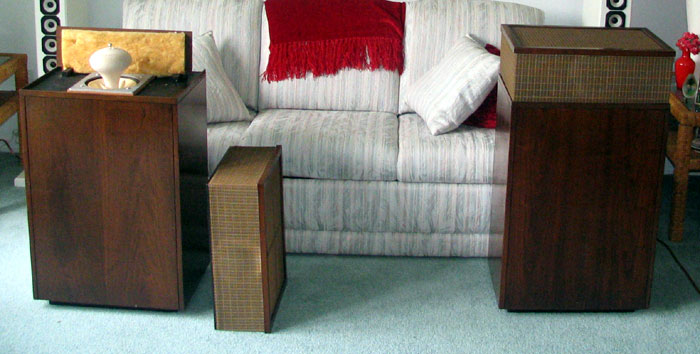
Since then, more than fifty years have gone by and I have been curious after all this time to listen to them again and hear if the sound is still as captivating as it was for me back in 1960. I had measured them many years ago to be very smooth on the high end but with unevenness in the 250 Hz area. It was only until recently that I found a pair that looked to be in good condition on ebay. I found the voice coil of one driver was rubbing but only very slightly. I listened to them, complete with back board and grille, and placed them about six feet from the rear wall. Unfortunately, although the dispersion remains excellent, the response of the 50-year old drivers is not smooth or flat any more. However, with copious amounts of equalization, I was able to reasonably restore the response. Sound seems to be coming from behind the speaker on a line between the listener and the speaker and not from the speakers at all. The preferred listening position is further back from the speakers compared to my column systems. Individual instruments image nicely but complex full orchestra sounds are compromised and indistinct—not coherent in comparison.
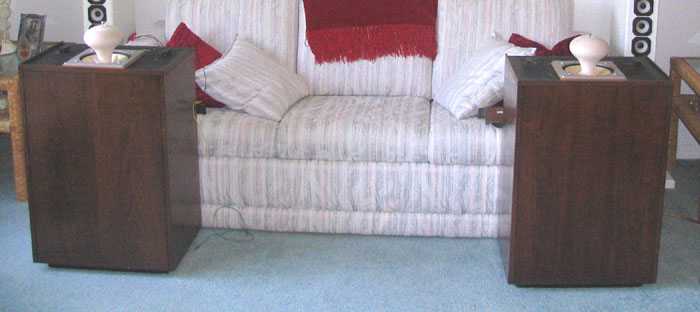
When the grilles and backs are removed, the listening impression is further improved. Imaging in mono appears to be at the center and in stereo it is very spacious and there is an overall quality that is hard to define.
![]()
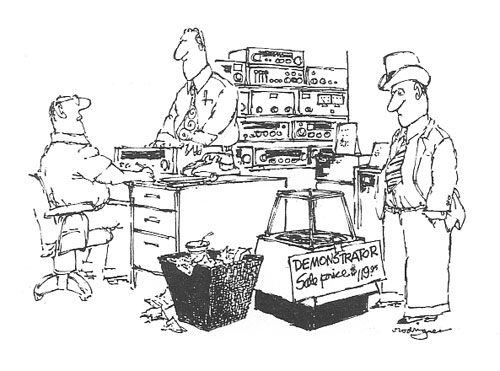
Courtesy of Rodreguis
![]()
Having heard this older pair of Citations, I was concerned about the rubbing voice coil getting worse and that the voice coil could be permanently damaged. Faced with the problem of restoring the drivers seemed to be very expensive and the original cones with the canoe whizzer and aluminum foil have not been available for decades. The best replacement was the PM6 cone assembly. Replacement even for that much could be $750 or more. Then there is still the narrow gap that could be a problem again. I decided maybe I could make something less critical and still get some of the benefits of the Citation design. I later sold the Citations in search of a similar system that would reproduce low frequencies better.
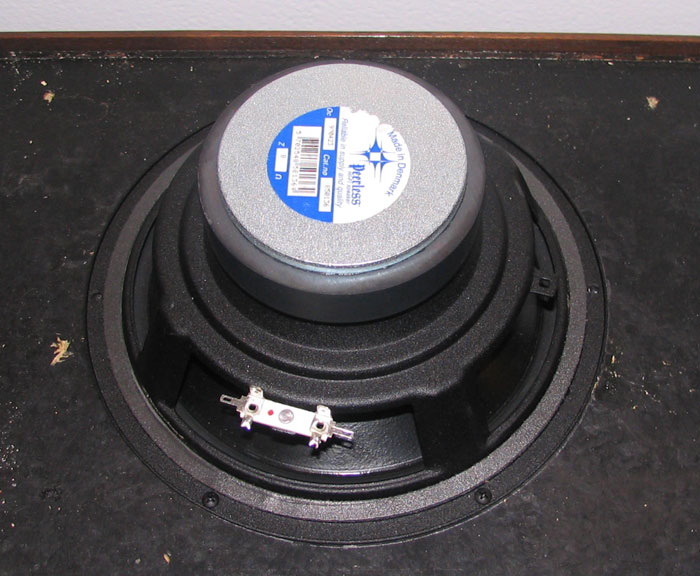
I decided to use a top of the line Peerless 8-inch driver 850136 that has a wider gap and handles more power. Rather than cut out larger holes in the Citation cabinet to accommodate the larger magnet structure and destroy the resale value, I decided to face the driver down into the cabinet. Output up to 1kHz remained excellent around the sides and even above the magnet assembly. Response was good down to 50Hz or so with the cabinet horn loading.

The next obvious step was to add tweeters and cross them over at about 1000Hz. I tried several configurations using Philips rectangular tweeters. Each tweeter is very smooth and has an excellent radiation pattern out to 45 degrees off axis. My first attempt was to mount four tweeters strategically located around the top of the cabinet. Four of them could handle significant power. Of course, I added a fifth tweeter facing upwards on the back of the woofer magnet structure. I designed suitable crossover networks and used variable resistors to set the levels. The fifth tweeter has a separate crossover. I need to be able to adjust the vertical output. Response was fair but only at a distance. I used a 1/3 octave real time analyzer to see the response. A fast check was to move the microphone around the assembly and note the variations in response. When listening, it did not have the enveloping presence of the Citation. That configuration was obviously not the best way to approximate a point source.
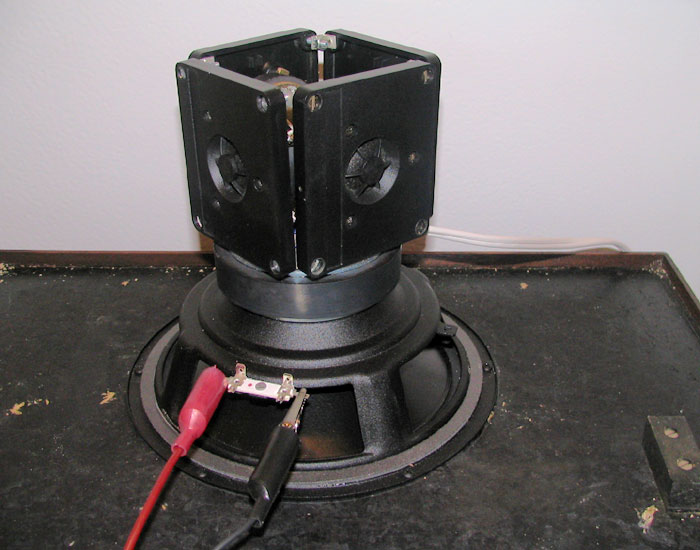
My second system is to mount the tweeters as close as possible and right on the magnet of the woofer. I then added the fifth tweeter facing upwards on top of the foursome. The tweeter configuration is small enough not to interfere with the output from the woofer. Response is very good around the sides and above the system.
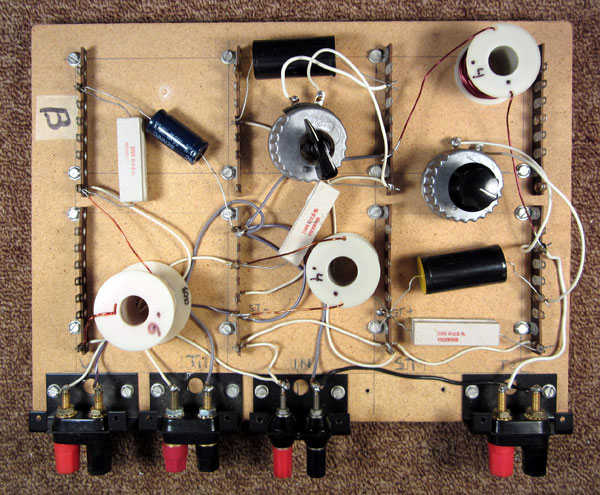
I made a temporary design board to work with so that changes could be easily made. This contains the crossovers for the woofer, 4-tweeter cluster and top tweeter. It is also used for the listening tests. The two tweeter controls can be seen with knobs on them. Later, permanent resistors could be substituted.
Conclusions
Although my later model omni speaker design was very good, the listening experience is still not as spacious and enveloping as the Citation. It lacks one important feature that the original Citation X has. The portion of the Citation sound that goes forward to the listener is reflected from the stabilizer. The sound is nearly identical for a solid angle of 180 degrees and diffuses the radiation. The tweeters in my design radiate directly outward and do not have reflectors. In addition, the Citation has no crossover network and the associated problems. The bass response, of course, is still limited by the horn cutoff frequency and also delay caused by the long path length of the horn to the slots near the floor. There is hardly any deep bass response down to 20 Hz. For some listeners the overall design would be very satisfactory but I am looking for more.
![]()
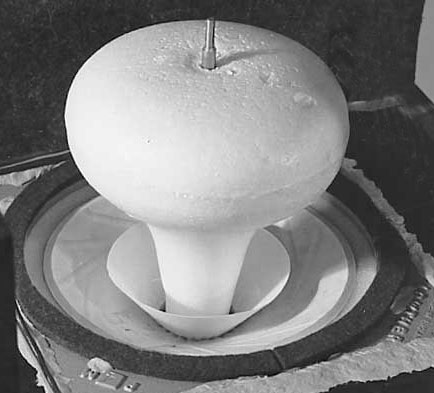
Because the Citation X bass handling was inadequate for my use, in May 1962, I imported a pair of Lowther PM4 drivers directly from Donald Chave at Lowther in England. Flux density for the PM4 was 22,000 gauss (2.2 Tesla), about the strongest magnetic gap ever used for a speaker. This driver follows the original design of Paul Voigt. I decided to purchase two mushrooms from Harman-Kardon but by then they had changed them from plaster to Styrofoam. I didn't know if this would be as good because the shape had changed slightly but I decided to use them anyway. The driver and mushroom face upwards as in the Citation X and I sealed around the edges of the driver basket and the enclosure with Mortite. I did use a brass stabilizer rod that is not attracted to the magnetic gap. I decided to supplement the bass using an AR3 woofer. I also found that a tweeter was needed to respond to 20kHz. The system is further described on my History Page.
So again, although I no longer have this system to compare, it has reflected sound from the from 500Hz to about 8kHz that is an important frequency range. However, it still has direct radiation from the woofer and tweeter and they are located at different places and require crossover networks.
![]()
Harman Kardon Citation Thirteen
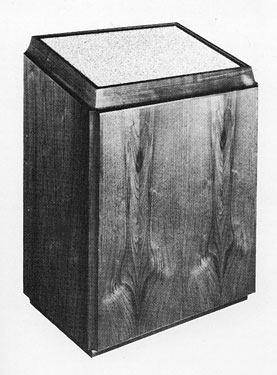 Harman Kardon continued
with the omni sound and wide response approach. No mention was made that
Hegeman was involved with this design but it may well have been. The idea here
was to angle the drivers toward the ceiling with some of it directed forward.
Harman Kardon continued
with the omni sound and wide response approach. No mention was made that
Hegeman was involved with this design but it may well have been. The idea here
was to angle the drivers toward the ceiling with some of it directed forward.
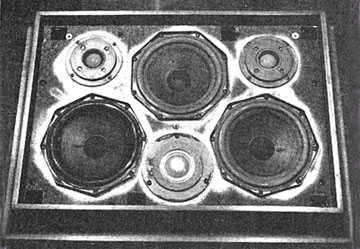
The system contains three 7-inch woofers, one 1-1/2” dome mid-range and two 1” tweeters all mounted on a board tipped forward at an angle of 14 degrees. Response is claimed to be30 t0 20kHz. Dispersion is essentially non-directional. Size is 29-1/2” high, 20-5/8”” wide and 14-3/4” deep. Weight is 75 lbs. Original selling price is $295.00
The three 7” woofers drive a dual chamber reflex system which terminates in two unequal length tuning tubes, one for each chamber, thus staggering the system and extending as well as smoothing low frequency response. The crossover slopes are 6dB per octave, causing minimum phase distortion.
Mid-range and tweeter controls are provided to adjust for the amount of middles and highs. In large rooms, the controls can be used at maximum or flat response but in smaller rooms the controls need to be reduced to some degree. At some frequencies impedance drops to about 4 ohms.
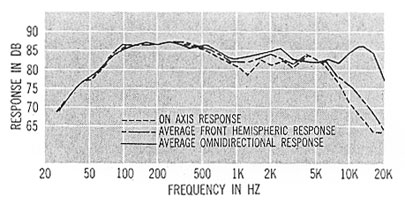
The Citation Thirteen was reviewed in the May 1972 issue of Audio magazine and the February 1972 issue of High Fidelity magazine.
![]()
These are the only pictures I have found and were copied with permission from the owner who has since parted with them. He said the imaging was unsurpassed. By coincidence, Hegeman Labs was in East orange, NJ, the same town as United Speaker Systems that was making speaker systems for Fisher and McIntosh.
This system pursued the idea of omnidirectional sound even further and radiated close to a hemishphere. Of course, it means that the system needs to be placed out in the middle of the room for best performance.
|
|
|

![]()
The legacy of the Hegeman 1a speaker system continues at Morrison Audio in Toronto, Canada. By 1977, due to health and financial problems, Hegeman transferred the remains of his company to Don Morrison, who continued with the 1a concept. The latest version is the smaller Model 7, a two-way omnidirectional design. The 4.5” woofer faces upward into a hemispherical reflector. Mounted in the top of the reflector is a small tweeter that also faces upward into a smaller spherical reflector. Crossover frequency is 8 kHz. A subwoofer is also available for this system. Other larger models have been available using the same design principles.
![]()
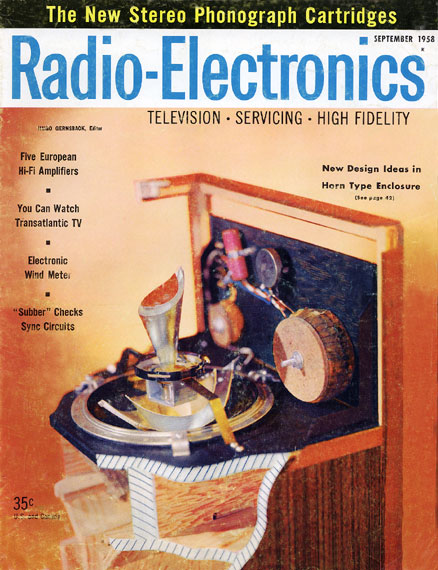
In 1958, Stewart Hegeman designed the Eico HFS-2 speaker system. Eico literature states:
“An equally important development appearing commercially for the first time, in the EICO standard speaker system, is an omnidirectional cone tweeter entirely free of perceptible distortion, peaking or sharp beaming at any frequency. This tweeter is placed in the open, above the horn box mechanism, protected on all sides by framed grille cloth windows. The sweet airy extended highs radiating in all directions help to provide the ‘open’ sound so essential to the feel of ‘live’ reproduction. Directivity: Essentially non-directive: distribution is 180 degrees horizontal, 90 degrees vertically.”
The HFS-2 may have been a predecessor to the Citation X. They were both designed by Stewart Hegeman. The HFS-2 made the front cover of the September 1958 issue of Radio-Electronics magazine. A 3-page article was written about the system by Stewart Hegeman and Norman Eisenberg.
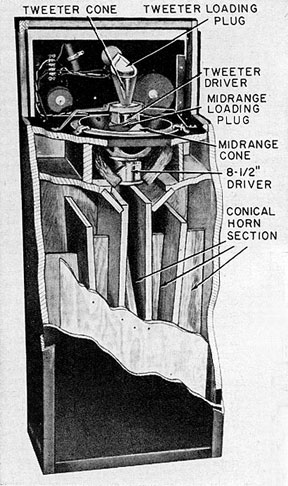 The system is smaller but has the same
dual slot loaded horn for the bass. However, there were two drivers, a woofer
and a tweeter. Of course, a crossover network was needed. They both faced
upward and the same ideas were used to approximate a hemispherical radiation
pattern with minimum phase changes.
The system is smaller but has the same
dual slot loaded horn for the bass. However, there were two drivers, a woofer
and a tweeter. Of course, a crossover network was needed. They both faced
upward and the same ideas were used to approximate a hemispherical radiation
pattern with minimum phase changes.
In this design, the edge of the tweeter cone is cut to provide a constantly varying distance between the cone’s edge and the voice coil. This is claimed to broadband the tweeter response while smoothing it.
It is further claimed that to enhance response further for mid-range and highs, a rigid and non-moving acoustical loading cone or plug is inserted concentrically within the radiating cone. This plug forms an air gap between itself and the inner surface of the radiating cone. The gap acts as a ring radiator.
An additional benefit from this plug is that it obviates any effects of response peaks or instability which might be caused by radiation diametrically opposite points on the inner surface of the radiating cone.
One of the advantages of this design and the Citation X is that since the drivers face upwards, response can remain reasonably uniform for 180 degrees around the system provided the rear board is removed.
The HFS-2 was advertised in a July 1958 Eico brochure. It includes many technical specifications.
It was available in mahogany or walnut for $139.95 or in a blond finish for $144.95
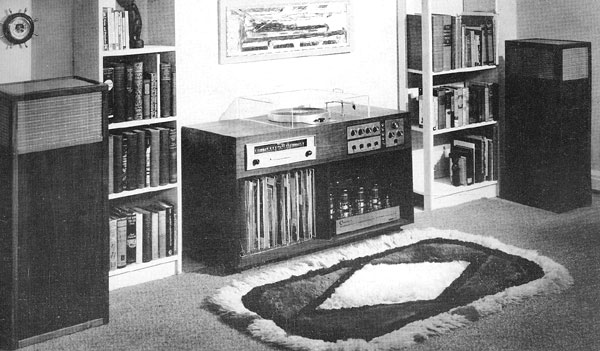
The HFS-2 also made the cover of the April 1960 issue of Audio magazine. Note the Citation I preamp and Citation II power amplifier in the cabinet.
![]()
Radio Shack
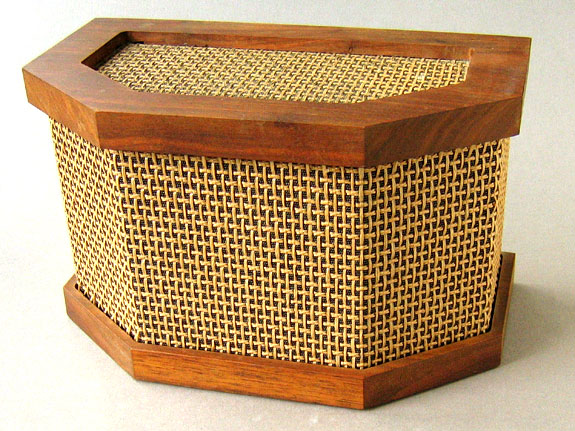
Here is a relatively unknown tweeter designed by Stewart Hegeman for Radio Shack. The date of manufacture is unknown but may have been in the late 1950’s. The design is similar to the tweeter used in the Eico HFS-2. The cabinet measures 6-1/4” high, 10-1/4” wide and 6” deep.
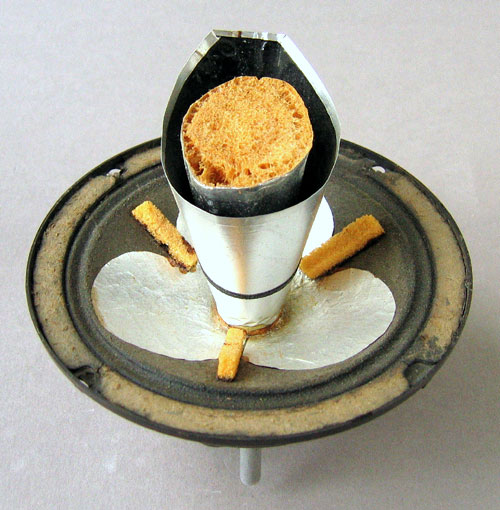
The driver is 5 inches in diameter. Hegeman made several modifications to the original driver. Three aluminum foil piesces have been attached to the cone plus three strips of foam damping. The foam pieces may have been very soft originally but today are very stiff. As in other of his designs, the aluminum foil is said to increase the propagation velocity across the surface of the cone.
In addition, a thin ice cream cone-shaped tweeter is attached directly to the driver voice coil. It is extremely fragile. The edge is folded over to reduce resonances in the foil. A center aluminum foil cone is filled with expanded urethane foam that is rigid when cured. It remains stationary and is attached to the driver pole piece. Both pieces are cut at an angle so that the lower portion faces the front. In addition, a narrow piece of black tape has been added to the outside of the aluminum cone.
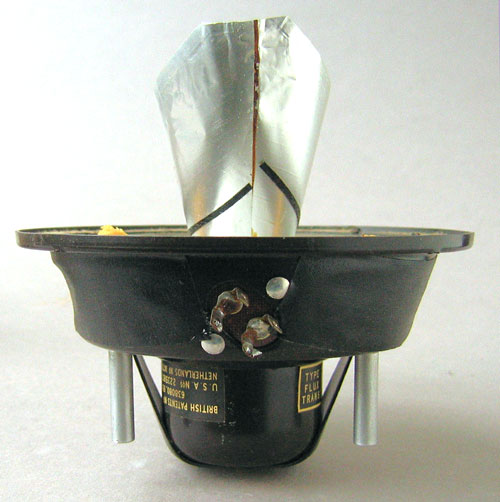
The driver is held face-up by three threaded stand-off rods. A recess is cut in the bottom of the cabinet to accommodate the depth of the magnet. The driver basket was originally the open frame type but black tape has been used to cover the open portions of the frame. The connecting terminals are towards the rear of the system. The driver is made by R&A in England. It is type 860P Mk. II. Flux density is 10,000 gauss. Several patent numbers are listed on the magnet structure for Britain, USA and Netherlands. In the late 1950s, R&A drivers were sold in the USA by the Ercona Corporation, 16 W 46 St, New York 36, NY
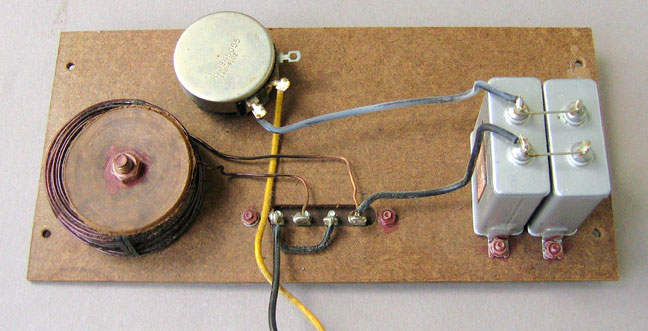
Two of the system input terminals are connected to the tweeter through two 8 mfd capacitors in parallel and then to a 30 ohm series wirewound control. The second pair of terminals goes to an external woofer through a series 1.3 mH coil. The control is used to adjust the amount of high frequencies. The system impedance is 8 ohms. The crossover component values indicate a crossover frequency of about 1 kHz. As in the Eico HFS-2, radiation from the rear of the tweeter reflects from the masonite back of the enclosure that contains the crossover network and terminals.

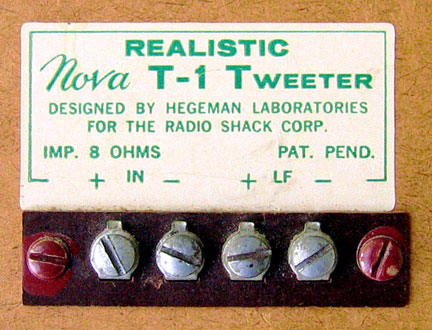
![]()
|
|
|
The Tannoy driver is an excellent choice for this particular 1971 system design. It incorporates Tannoy’s principle of concentrically mounted high-frequency exponential horn tweeter, the curve of which blends into the shape of the larger surrounding woofer cone. The driver faces upward and radiates against a curved deflector whose own shape follows that of the combined woofer and tweeter. A vent opens at the bottom of the enclosure using the bass reflex design. Wooden blocks under the cabinet provide a path to the outside.
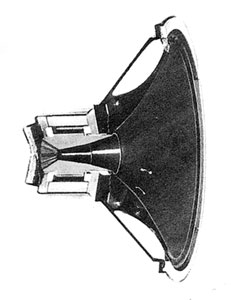
Here is a cross section showing the horn tweeter in the center. An acoustically transparent dust cap covers the horn so it not easily seen from the front of the driver.
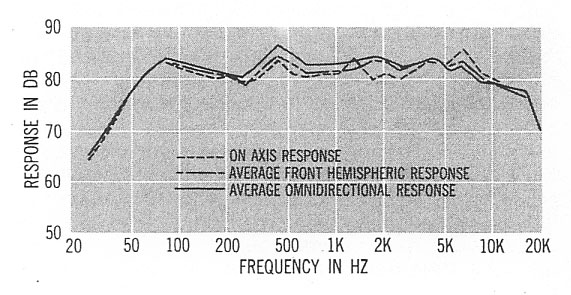
The system radiates effectively on all four sides. The graph is from the CBS Lab tests in High Fidelity magazine.
The system was reviewed in High Fidelity, July 1971 and Audio, October 1971
Again, there is no significant vertical radiation from the system.
![]()
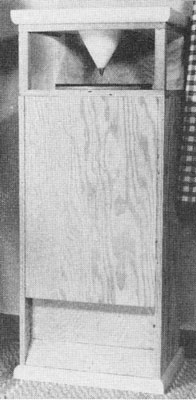
This is a do-it-yourself construction speaker article by David Weems and titled Space-Saver Speaker System. It was published in the July 1961 issue of Popular Electronics. It is not featured as an omnidirectional speaker but is very similar to the above Tannoy system. No mention is made about the driver other than it is type Lafayette SK-128. After looking for a description, it turns out that it is a biaxial 8” speaker.
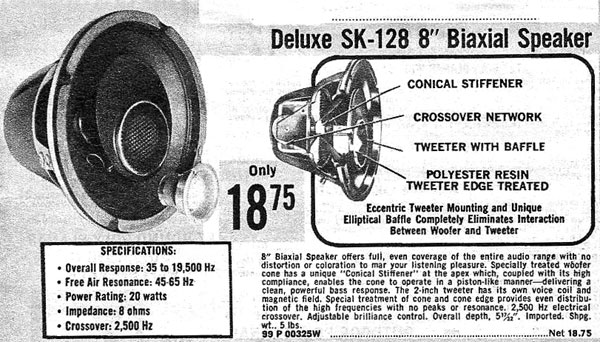
This is much like a coaxial driver but with the tweeter mounted off center.
|
|
|
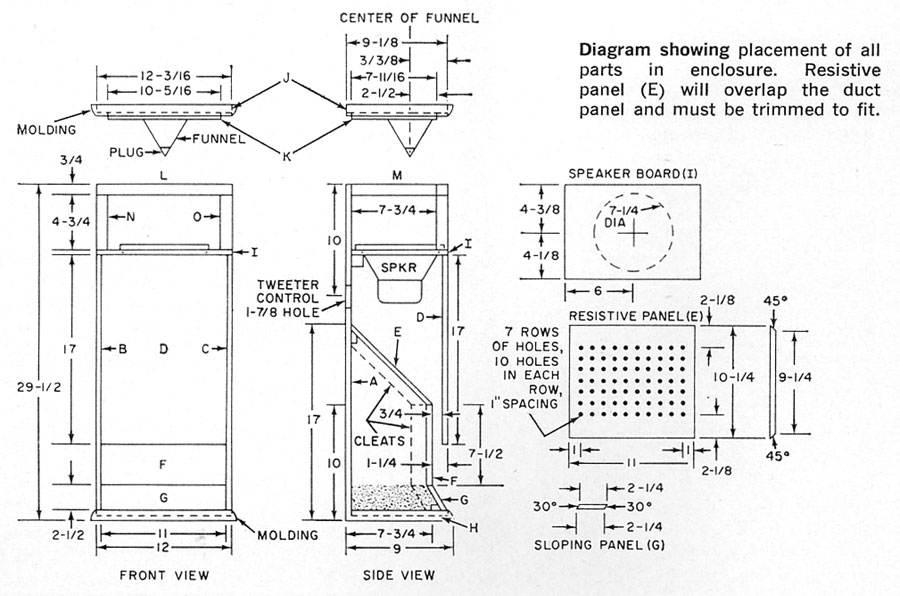
This is basically a vented system but with an extra chamber coupled through a perforated board to act as an acoustic resistance. This is claimed to reduce bass resonances. The conical reflector is made of plaster cast in a funnel that is blocked at the bottom. The cone is attached to the top of the enclosure. The back behind the cone is solid but the other three sides are open. He offers the option for listener preference by not having a top cover and supporting the cone with a ¾” brace.
If a tweeter must be used for this type of design, a coaxial mounting is preferred but, of course, a crossover network must be used.
![]()
Harman Kardon HK-50 Omnidirectional Loudspeaker System
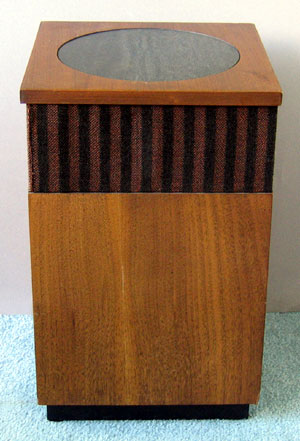
This is an interesting but small speaker system marketed in 1969 by Harman Kardon. It is 11-3/4” by 11-3/4” and 18-1/4” high and weighs 22-1/2 pounds. This little gem radiates all reflected sound. The 8” woofer and 2-1/2” cone tweeter face upwards into a specially contoured Styrofoam cone shape. The sound radiates from all four sides. The top, although appearing to have a round grille in the center, is actually solid wood, perhaps for decorative purposes.
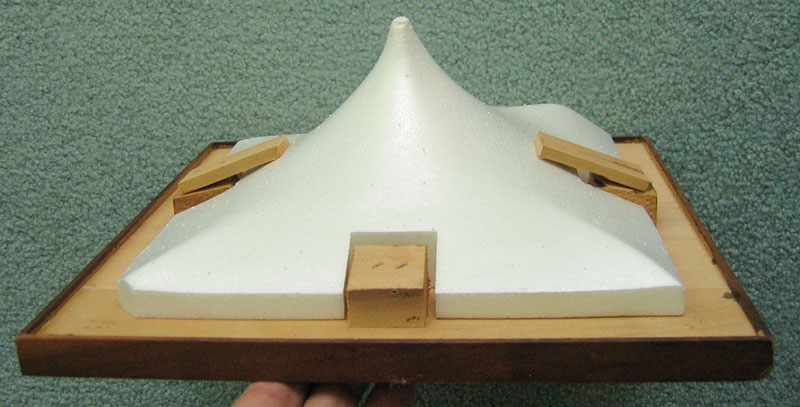
The Styrofoam reflector is held in place with two pieces of wood stapled to two wooden blocks. Note the extra contour in the right rear of the Styrofoam. This is located above the tweeter. The apex of the cone is about 4-1/2” above the base. Although the 8” driver is located off center in the cabinet, the apex of the cone is in the center of the cabinet.
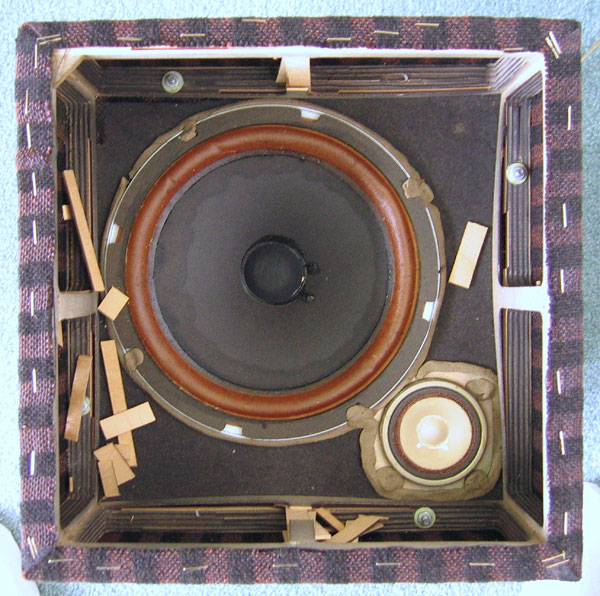
Each side of the wood-frame grille has four large openings of equal size. The material is made of multiple-layer plywood and over the years has separated.
Some of the thin laminates were rattling around inside when I received the system. There is no indication of which side is the front but judging from the terminal location under the cabinet, the bottom of the above picture is the rear of the cabinet. The system is a sealed type and the drivers are sealed in place with Mortite that is now as hard as a rock. Even the mounting screws are covered.
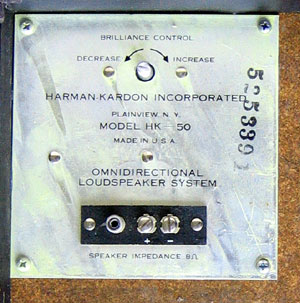
The terminal plate is located in a corner of the bottom of the cabinet. The speaker terminals are either screws or an RCA phono type socket. System impedance is 8-ohms. An adjustable brilliance control is for the tweeter level.
Unlike the Eico HFS-2 and Citation X that have a closed back to allow placement against a wall, this system must be placed away from the wall or other reflecting surfaces. However, it is this very requirement that creates an advantage of better sound distribution. First listening to the system revealed a very spacious sound but the low frequencies were very limited by today’s standards. A review of the HK-50 was published in the June 1969 issue of Audio magazine.
![]()
Zenith Circle of Sound Speakers
A popular design introduced in 1968 was the Zenith Circle of Sound series that radiates reasonably well in a 360 degree circle but is mainly in the horizontal plane resulting in more of a donut shaped radiation pattern. It contains a single six-inch driver facing upwards into a curved solid plastic cone designed to radiate 360 degrees. The speakers are part of the Troubadour Z590 and Moderne Z565 systems.
Obviously not audiophile quality, but they do sound surprisingly clear for their novelty look and lack of a separate tweeter. Standard speaker wire with phono/rca plugs is built-in, which indicates that these speakers were never sold separately but were part of a complete system. The outer dimensions are 13 3/8 inches tall and 10 1/8 inches in diameter.
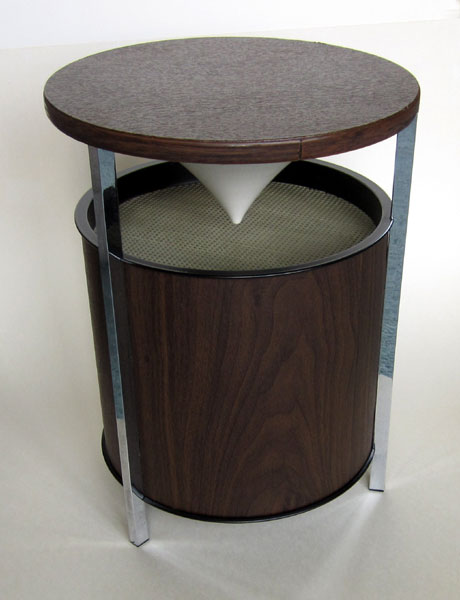
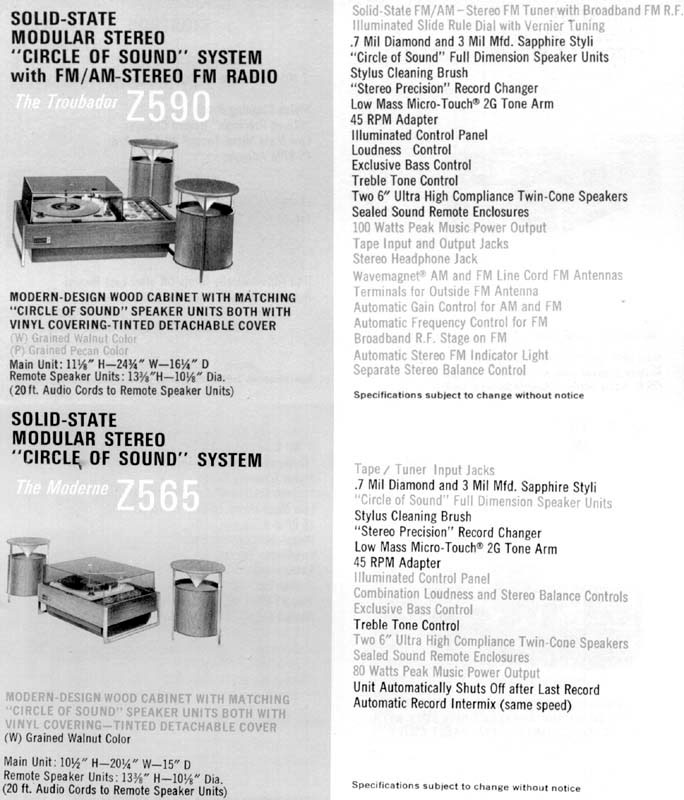
When listening to a pair of these systems today, they practically have no bass response at all. The system resonance is 240Hz for either system and response rolls off below there.. After removing the woofer, the free air resonance of the woofer is also 240Hz, indicating that the sealed enclosure contributes nothing to enhance the bass response. This abnormally high resonance may be due to stiffening of the spider or surround material over time.
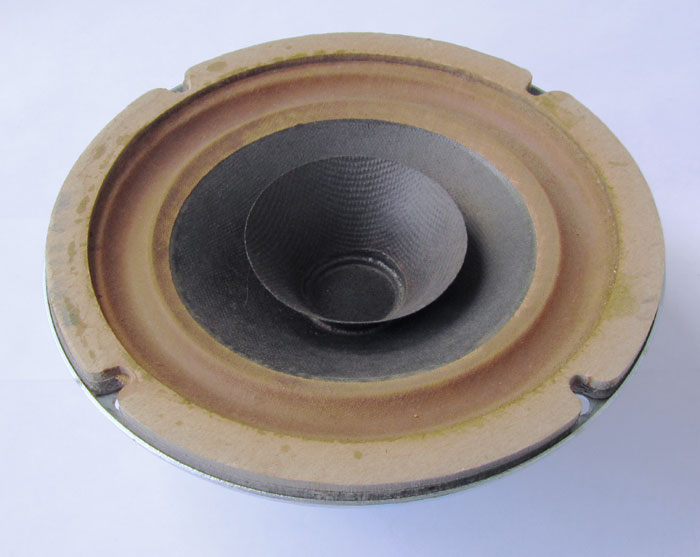
The single driver has a small concentric cone called a whizzer. It is glued directly to the voice coil and extends the higher frequencies. The main cone and whizzer are made of paper. The surround is a reverse half roll and is made of cloth. The cloth has been treated with material to seal the interstices.
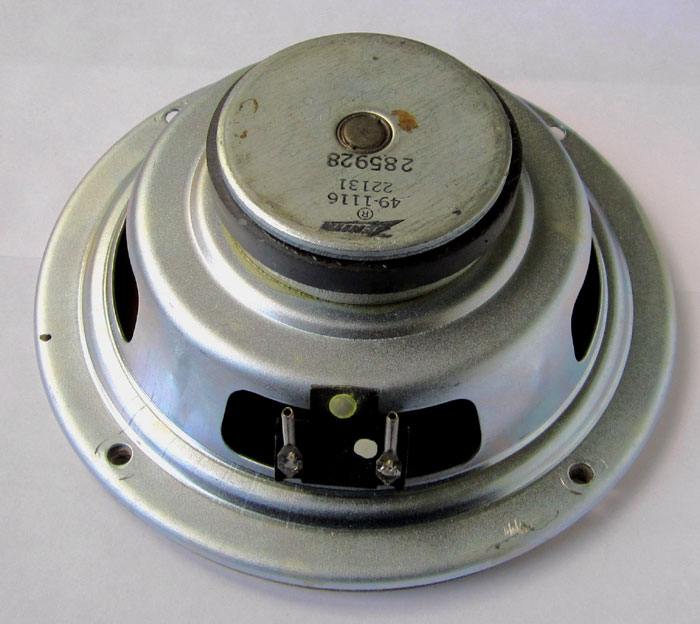
It has a ceramic magnet. Slip-on connectors are used to connect the speaker wire. The white dot next to the right-hand terminal indicates the positive terminal.
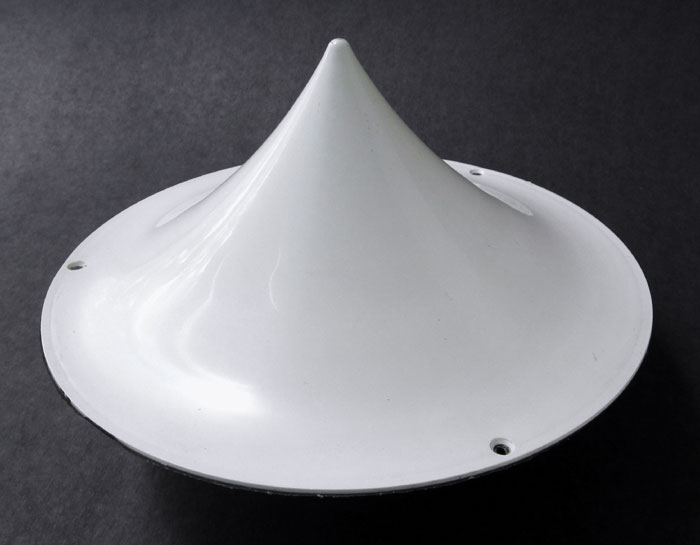
The curved cone reflector is made of 1/16” vacuum-formed white plastic. It is attached to the top piece of the system with three screws and double-sided tape, probably to prevent vibration. The cylindrical enclosure is completely lined with 1” thick Tufflex acoustic material. Having only a single wide-range driver, there is no crossover network.
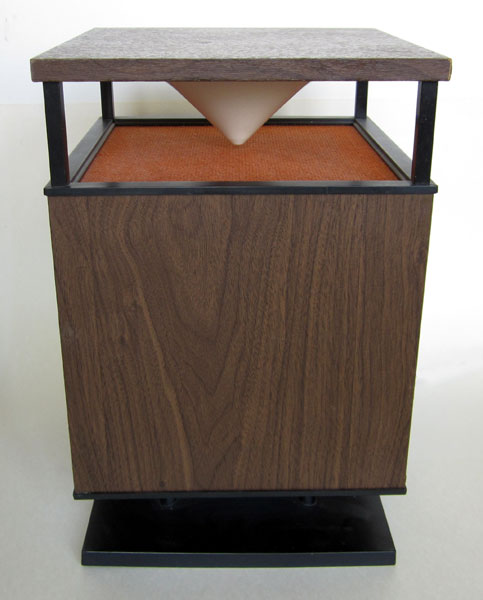
An improved version of this system is the addition of a bass driver to complement the mid and high frequency radiation from the top section. It faces downward into a similar curved cone
There were other models as well.
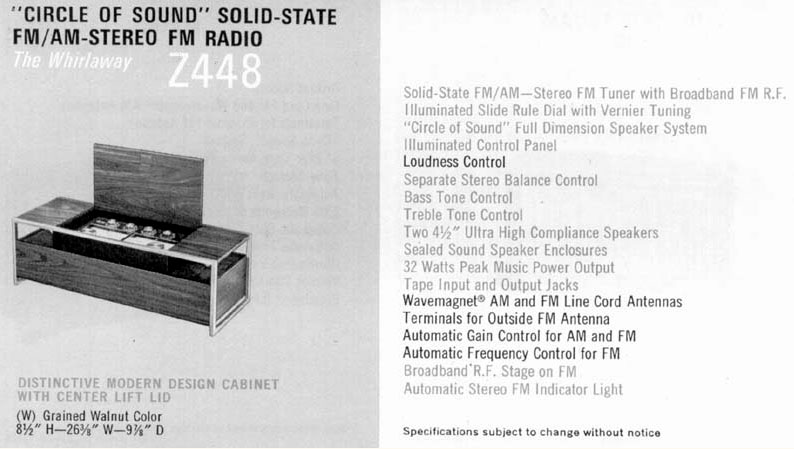
![]()
JBL Paragon
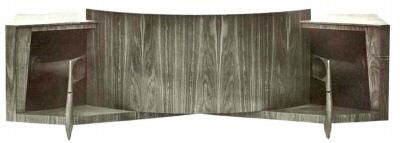
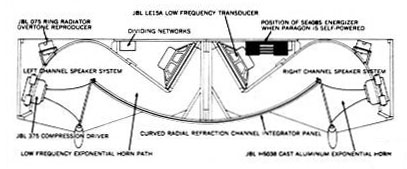
![]()
The design of the Citation X, HFS-2 and 1A systems advance the theory that much of the sound that we hear in a concert hall is reflected sound. Both Hegeman and Bose have concluded that a speaker system should also accomplish the same thing in the living room. Their discussion also acknowledges that a point source and therefore radiation from a pulsating sphere is ideal. So then, the sound radiated from the speaker should have a wide dispersion radiating both vertically and horizontally all around the room. Of course, a living room is not a concert hall and they are nothing like my living room. For one thing, the concert hall is much larger with longer arrival times and has longer reverberation times.
The other side of the story is that when listening directly to a loudspeaker system, when it is facing you, the directional characteristics play a very important part. If the directionality is not smooth and uniform around a loudspeaker throughout the audio spectrum, errors can be heard. This is where the ideal point source of sound might come in handy. Despite the negative criticism, indirect (reflected) sound does present a pleasing quality with less harshness sort of like when you are listening in the next room. In a similar way, a full range system mounted in the rear deck of a car produces reflected sound from a slanted rear window and also has a pleasing sound. The price paid is accuracy in coherence and imaging compared to the original performance or at least the way it sounded to the recording engineer and producer in the recording studio. If a system that is designed to face forward is directed towards a reflecting surface instead, such as a wall, it can cause an indistinct and blended sound. In addition, if the total power radiated from a reflecting system is not uniform, the overall sound balance can be altered. This could be compared to the sound of a system with good dispersion that is facing forward.
![]()
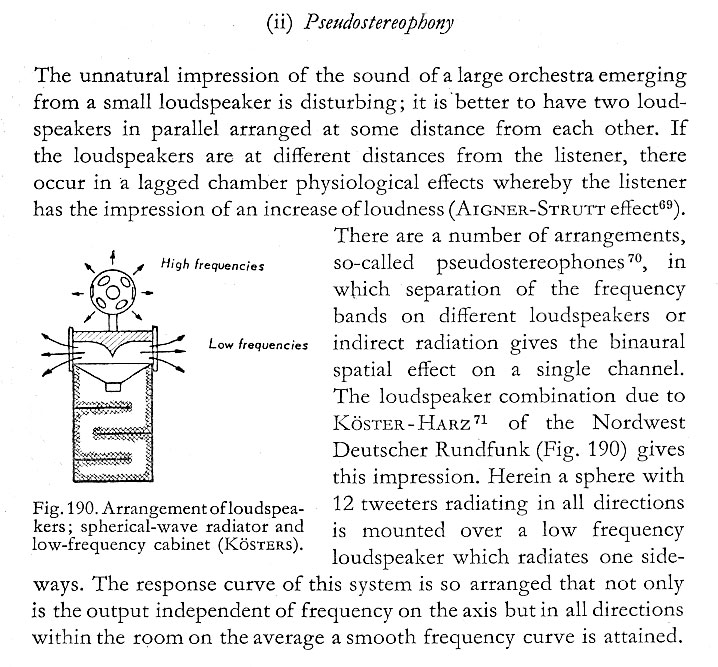
From Richardson Technical Aspects of Sound Vol I
Elsvier Publishing Company (1953)
![]()
From the review of the Harman Kardon HK50
High Fidelity magazine January 1986
“Omnidirectionality is spreading the sound uniformly throughout the room rather than beaming it. This characteristic applies in design terms, to the midrange and highs (the bass naturally spreads itself in a wide circular pattern). Sound that beams not only is distorted, but it can degrade the stereo image. Actually, on stereo, two speakers beaming do not provide a true stereo effect but rather two mono images. What’s more, if you listen to beaming speakers from any spot other than where the two beams intersect, you miss a good deal of the stereoism. Omnidirectionality overcomes these problems: the sound is spread out naturally and it can be enjoyed from virtually any part of the room. . At the same time, the spread effect does not lessen the system’s ability to project directional information; you certainly can tell that the first violins are on the left, the bases over on the right, and so on. Moreover, omnidirectional speakers help to fill the space between the stereo pair and seem to add a sense of front-to-rear depth. You are not limited to a small listening area to enjoy the presentation, and there are more locations in any room for installing such speakers so they load correctly to the room. No beaming effects can be discerned from any angle around the speakers and tones above 10 kHz are clearly audible from any listening position, even from an adjacent room through an open doorway.”
-----------------------------------------------------------------------
From 1960 Citation literature
“The Citation X diffuses sound in a hemispheric radiation pattern—by a blend of direct and reflected sound. In creating this design, the precise process of what occurs in a concert hall has now been duplicated. Audio engineers know that approximately 80% of the sound in a good concert hall is reflected from the ceilings, walls, etc. It is this mixture of direct and reflected sound that gives music its depth and dimension, its exciting special quality. The Citation X achieves precisely this effect by distributing music vertical and horizontal planes.”
---------------------------------------------------
Bose Lierature 1969 for the 901 direct/reflecting speaker
“A multiplicity of closely-spaced, acoustically coupled, full-range speakers can produce music and speech signals in a normal listening environment that are subjectively indistinguishable from those that would be produced by an ideal pulsating sphere in the same environment.”
“In a live performance the wall behind the musicians is one of the most important surfaces in the acoustical design of the hall. It is for the same reason that speakers should be designed to use one wall of a room to simulate the stage of a live performance. Since home rooms and speakers are smaller than stages and orchestras, good simulation requires that each speaker be capable of presenting a sound image that is broader than the dimensions of the speaker itself.”
“The 901 has eight speakers on the back panels and one on the front. This accomplishes two objectives, first, it provides the desired ratio of about 89% reflected sound to 11% direct sound. Secondly, by proper choice of angles of the rear panels the 901 projects the image of a musical performance spread across a stage that is located about 2 feet behind the speaker.”
------------------------------------------------------------
I don’t know how Bose accomplished an ideal pulsating sphere to use in an A to B comparison to the 901, certainly not by listening. It is also interesting to note that nine 8-ohm drivers connected in three groups of three drivers in series and then the three groups connected in parallel yields the same 8-ohm impedance as a single driver. By coincidence, the rear-facing eight drivers provide 88.88% reflected sound. Rounded off, I have noticed that this conveniently comes to exactly 89% reflected sound and 11% direct sound, just what Bose said it should be or perhaps wanted it to be.
The Ohm Walsh speaker consists of a single driver facing downwards. The concept was invented by Lincoln Walsh in in 1957 but the patents are now owned by Ohm. The speaker creates a cylindrical sound field that is omnidirectional in the horizontal plane. It handles frequencies from low bass to most of the treble range. However, recent versions have a forward facing tweeter. This is undoubtedly needed due to the high mass of the high frequency portion of the cone and extends the range above 8000 Hz.
Typically, a well-designed omni system can be surprisingly neutral, to the point that you are barely aware you are listening to speakers, and this is one of the greatest complements one could pay to a loudspeaker. The sound is well balanced and “all there,” though with the totally non-localized apparent source that is characteristic of speaker systems with very wide radiation patterns. It must be away from the wall.
Weems, David B., Space-Saver Speaker System, Popular Electronics, July 1961, Pages 72-75, 111.
Even the older JBL paragon used reflected sound in the design. Their room at the New York Hi-Fi show was always packed with visitors listening to the master tapes that were being played.
Loudspeaker Directionality and the Perception Reality by Bert Berlant, JAES Vol. 33, No. 5, 1985 May
![]()

Courtesy of Rodrigues
![]()
|
About This Site |
||
|
|
Created
by Roger Russell |
|

